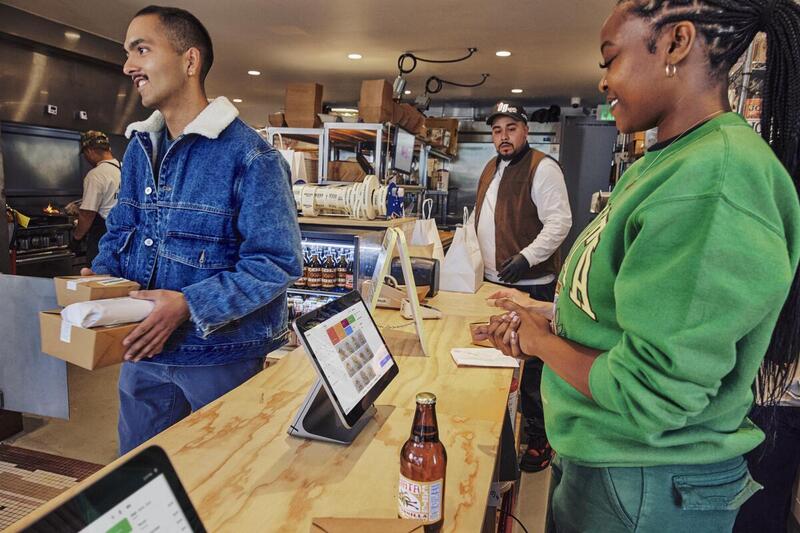Table of contents
When you first open a restaurant, daily tasks can take up so much attention that it can be easy to forget to step back after a while, and think about whether it might actually be a good time to expand.
Restaurant owners scale their footprint for good reason: Growing can help you reach more customers, maximize your revenue potential, and diversify your risk in the market. That’s been the case for the team at Ggiata, which operates four Delis in Los Angeles that are among Eater’s list of the city’s best. “Opening new stores is our best customer acquisition tool,” Co-founder Jack Biebel told Square.

It’s important to approach the opportunity to grow at the right time and make informed decisions during the process to avoid jeopardizing your restaurant, however. For Broad Street Oyster Co. Founder, Christopher Tompkins, it’s about knowing when to act. “We’re patient,” he told Square. “We’ve ended up with five restaurants and one coffee and ice cream shop because we are really looking towards a deal that makes sense for us and our team. And the timing just has to be right.”
How do you know when it’s time to grow your business and open another restaurant? Here are five indicators.
1. You can’t keep up with demand.
The decision to expand should never be prompted by a desire to stick to an arbitrary growth plan when you don’t have any real justification for doing so. Before you even consider expanding, ask yourself if there’s a need. Do you have more orders than your staff and facilities can handle? Can you accommodate the number of customers that you’re attracting? If your numbers warrant growth, that’s the first step. Your restaurant technology can be a great place to get an accurate pulse on this information. The Square Kitchen Display System, for instance tracks order wait times, and the Square Restaurants Point of Sale data logs live sales counts.
2. You have a solid team in place.
A strong team of employees is essential when you’re considering expanding. If you’re planning to open new locations, you’re going to be spending a good deal of time getting things up and running in those areas, so you need to have people you trust to hold down the fort. If you don’t have confidence in your team, make some changes and key hires before moving forward. Also, ask yourself if you need to hire more employees. Before you expand, you’ll want a competent, well-trained team ready to go.
3. You have enough cash.
Expansion takes money. So, even if you have a ton of orders, you’re not in a position to grow unless you’re actually getting paid enough capital. Only when you have strong, positive cash flow should you consider taking the next step. Ming-Tai Huh, Square Head of Food & Beverage and multi-restaurant owner says, “Pay attention to your prime costs and your bottom-line profit.”It can be wise to try to keep your prime costs under 65% and your margins between the National Restaurant Association’s reporting average, between four and six percent.”
4. You’re running out of space.
Whether you’re working in a restaurant, a manufacturing facility, or a commercial kitchen, you need enough room to operate comfortably. And if the number of customers visiting your business has spiked or you’ve increased staff but are still in the same space, everyone is going to get frustrated. Don’t be hasty about leasing a larger space or opening a new location. First, make sure that your growth is consistent and not just a seasonal spike. Also, don’t get ahead of yourself. Expand gradually to avoid investing in a space that’s too large or expensive for your business to sustain.
5. There’s a demand for more products and services.
If you’ve created a restaurant that has taken off, think about variations you could make. For example, if you started as a food truck like Crepes Bonaparte, it might make sense to take on more orders by expanding into a brick-and-mortar business. Your customers’ input can seriously help here. If they’re consistently asking for something you don’t offer, or if they have an interesting idea for a new flavor or product, it might be something worth pursuing.
Reference your restaurant data to know when to grow
One of the biggest barriers to expanding to another location can be the costs involved in the process. Owners know the restaurant industry’s margins are razor-thin. After weighing your opportunity to expand, logging your costs using an expense tracking tool can set you up on a path for success.
Your existing business data can also big a huge help in making sure you grow the right way. For Gioia’s Deli owners, food truck data helped inform where they started up additional brick-and-mortar locations. “That’s how we went into Creve Coeur, downtown, and Valley Park,” Amanda Donley told Square. “We looked back at our sales in the food truck, where our brand transferred, and what were our biggest stops. And it was like, ‘Creve Coeur is huge. We need a location there.’”
![]()












